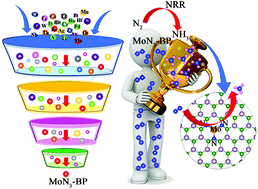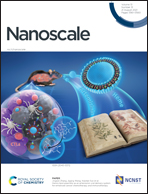High-throughput screening of single metal atom anchored on N-doped boron phosphide for N2 reduction†
Abstract
Developing eco-friendly and highly-efficient catalysts for the electrochemical nitrogen reduction reaction (NRR) under ambient conditions to replace the energy-intensive and environment-polluting Haber–Bosch process is of great significance, while remaining a long-standing challenge in the field of energy conversion today. Herein, through the first principles high-throughput screening, we systematically investigated the catalytic activity of a series of single metal atom immobilized on N-doped boron phosphide (N3-BP) for N2 reduction, denoted as MN3-BP. In particular, a “four-step” screening strategy, involving the structural stability, N2 chemisorption, low energy cost, as well as good selectivity, was adopted for the stringent screening of the promising MN3-BP candidates for NRR. Our results unveil that among these candidates, MoN3-BP eventually stands out, benefiting from its high selectivity and activity, as well as accompanying a considerably favorable limiting potential of −0.25 V for NRR. More impressively, the NRR activity origin of various candidates was revealed by the descriptor φ and ICOHP. Overall, our work not only accelerates the discovery of SACs for converting N2 into sustainable NH3 but also provides an exciting impetus for the rational design of NRR catalysts with high stability, high activity, and high selectivity.



 Please wait while we load your content...
Please wait while we load your content...